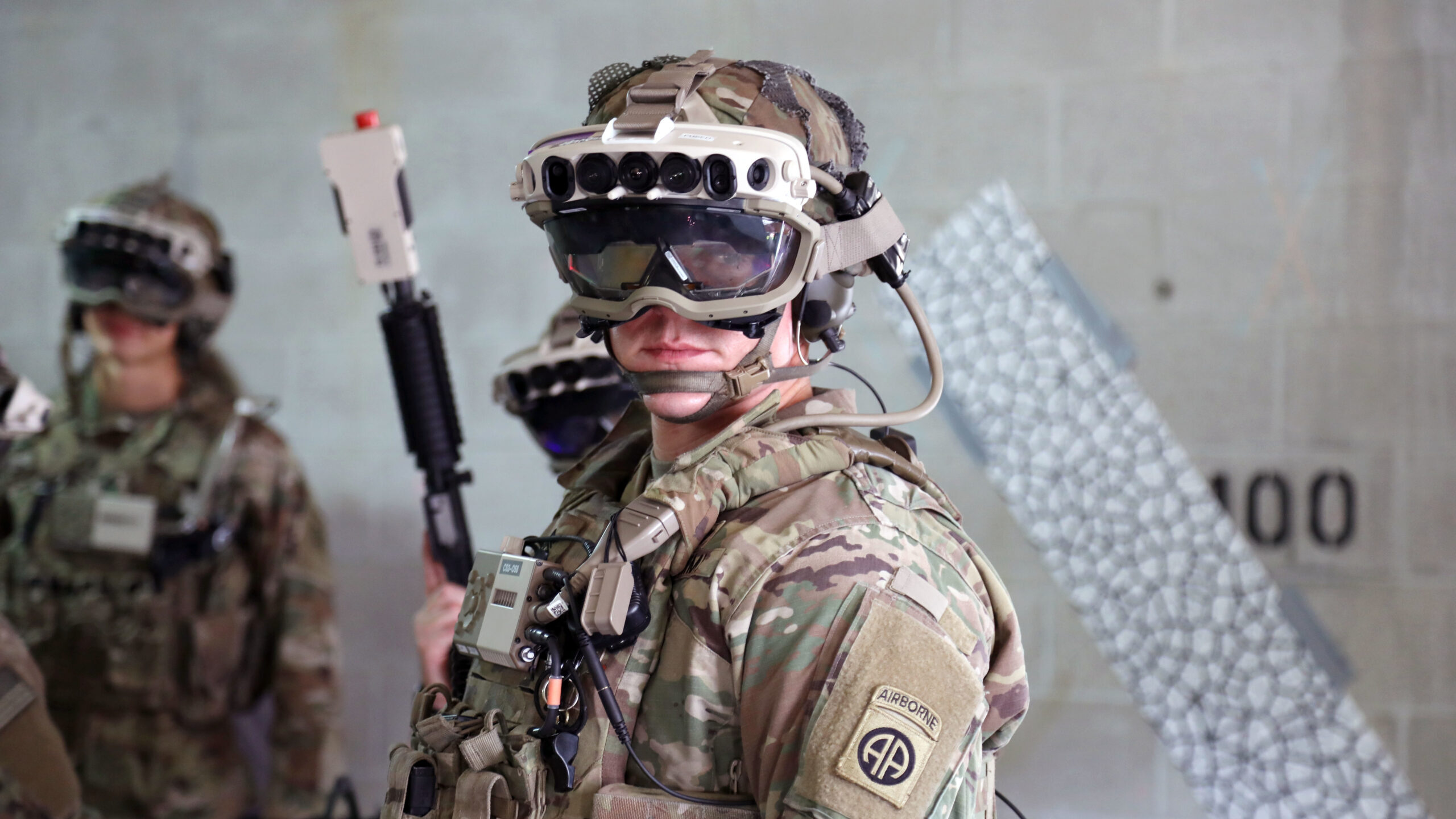
Soldiers don the Capability Set 3 (CS3) militarized form factor prototype of the Army’s Integrated Visual Augmentation System (IVAS) and wield a Squad immersive Virtual Trainer (SiVT) during a training environment test event at its third Soldier Touchpoint (STP 3) at Fort Pickett, Virginia.
WASHINGTON: After several months of waiting for Senate confirmation, the Army’s newly installed top acquisition official is ready to take a closer look at the service’s acquisition practices, talent and programs.
Doug Bush, the Army’s new assistant secretary for acquisition, logistics and technology, served in an acting capacity since March 2021, will now oversee the service’s massive modernization effort that spans from new network tools to modern combat vehicles.
Speaking to press in his first media engagement since being confirmed earlier this month, Bush said that he was “very comfortable” with the status of the service’s modernization priorities, but identified a few overall areas of improvement in software and operational testing. He also provided updates on the beleaguered Integrated Visual Augmentation System and recently paused Common Tactical Truck prototype effort.
“I see promising signs of success, but there is a lot more work to do,” Bush told reporters last Thursday. “My focus is on cooperation, coordination and unity of effort across the whole Army.”
Here’s what you need to know:
How Software, And Budgeting For It, Is ‘Critically Important’
Bush said that improving the Army’s software practices is high on his priority list, moving away from waterfall development to more iterative development. He said the service needs to take advantage of new software acquisition pathways established by Congress in previous National Defense Authorization Acts, the annual defense policy bill, to more quickly acquire software.
For example, Bush noted that the Pentagon distinguishes between research and development dollars and procurement funds, while the private sector does not.
“That’ll be discussion with Congress to make sure they’re comfortable with how we’re proposing to use the authorities and whether or not we can think differently about how we budget for software, which will be critically important,” Bush said.
Though light on details, he also noted that the service needed to take advantage of the software talent in the service, both from soldiers and in its acquisition corps. To that end, Bush said he sees the software factory run by Army Futures Command, which teaches soldiers software skills, operating for “at least” five more years.
“We’ve got to leverage all the talent across the Army to get better at software,” Bush told reporters. “There’s people side to it. There’s an authorities side. And there’s a money side.”
“So I can’t say I’ve got a master plan, but I want to develop a plan to … get us better than we are,” Bush said.
Simulating Adversary Capabilities In Cyberspace
In his new job, Bush said that he wants to make sure that the Army does cyber testing earlier on its acquisition programs as part of his goal to improve operational testing of its programs against what real adversaries can do.
“We are facing more and more sophisticated adversaries, we need ways to test against their capabilities. That often will end up in simulations, those simulations will have to be very high fidelity, to make sure it’s valid. So I think those two areas — simulations and cyber — are probably the areas where we can improve the most on testing, working collaboratively with the testing community,” he said.
Bush didn’t name any specific programs that hadn’t been tested under realistic conditions, but the annual report from the Pentagon’s chief weapons tester found that many of the service’s top programs struggled against cyber threats.
“It’s not just something due at the very end, it’s something you do along the way,” Bush said.
Integrated Visual Augmentation System
In March last year, the Army awarded an eye-popping $22 billion indefinite-delivery, indefinite-quantity to Microsoft for its battlefield augmented reality goggles. Since then, the program has hit delays dues to issues with the field of view and effects on soldiers.
The delay shifted operational testing to May and fielding scheduled for September this year. The IVAS program is one of the service’s 35 modernization priorities and one of the 24 that is scheduled to be in the hands of soldiers by fiscal 2023. It’s also one of the most the service’s prime examples of its working to harness the innovation outside the traditional contractors of the defense industrial base.
The service took another unconventional approach with IVAS by awarding the production contract ahead of the operational test, an approach that Bush said could be done in the future if the service proves it can be done successfully with IVAS.
Bush acknowledged such an approach “might get bumpy in places” but said overall he’s supportive of the strategy.
“If it’s done well, and if it’s done in good coordination with Congress in terms of providing transparency [in]to what we’re doing, I think it’s an example of a more flexible approach the Congress has said they want. It might get bumpy in places, new technology often gets bumpy in places,” Bush said.
As for the $22 billion price tag, Bush predicted, “I don’t think we’re going to spend that much.”
Common Tactical Truck Pause Is ‘Minor’
Last week, Janes broke news that Army had pressed the pause button on the service’s $5.1 billion Common Tactical Truck competition ahead of the release of its request for prototype proposal. During the roundtable, Bush characterized the delay as “minor.”
“I would call it a minor pause because of some internal discussions about exactly how we’re going to do the prototyping effort,” Bush said, adding that there will be additional updates on the program “soon.”
The Common tactical truck family of vehicles are supposed to replace the Army’s Palletized Load System, M915 line haul Truck Tractor and the Heavy Expanded Mobility Tactical Truck.






















